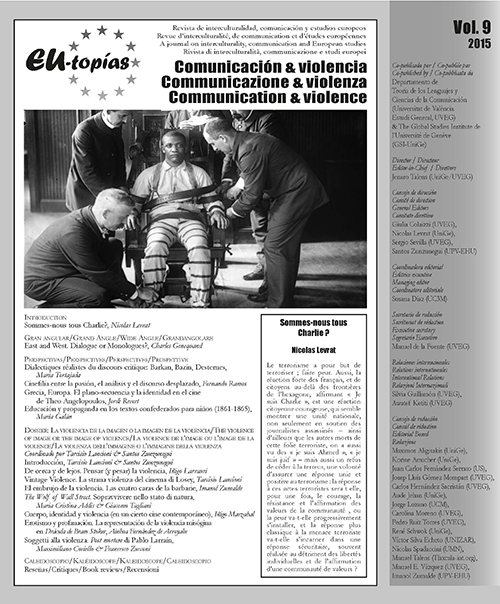Cuerpo, identidad y violencia (en un cierto cine contemporáneo)
DOI:
https://doi.org/10.7203/eutopias.0.18753Keywords:
Body, identity, violence, cinema, David Cronenberg Abstract
Abstract
Few things can be as certain as our own corporeality. The body is support of and limit to our identity, it is what determines where I end and the other begins. And it is precisely in the cinema, because of its technological nature, where the issues of body and identity are closely related. There is a type of contemporary cinema inhabited by liminal and ambivalent, lonely and uprooted characters who maintain a complex relationship with violence. On the one hand, they expressed themselves through it; on the other, violence expresses itself in them through scars, tattoos and other bodily bricolage, making the human body unique. Since the body is the only tangible thing in a situation in which everything seems to fade, flesh stands out as the only surface on which to draw firmly an identity always prone to vanishing. Eastern Promises (David Cronenberg, 2007) is one of such films.
 Downloads
Downloads
 References
References
Barthes, Roland (1999), Mitologías, México D. F.: Siglo XXI.
Beaty, Bart (2008), David Cronenberg’s A History of Violence, Toronto: University of Toronto Press.
Comolli, Jean-Louis (2012), Corps et cadre. Cinéma, éthique, politique, Paris: Verdier.
Imbert, Gérard (2010), Cine e imaginarios sociales, Madrid: Cátedra.
Le Breton, David (2002), Signes d’identité. Tatouages, piercings et autres marques corporelles, Paris: Métailié.
Riches, Simon (2012), The Philosophy of David Cronenberg, Lexington: University Press of Kentucky.
Shaviro, Steven (1993), The Cinematic Body, Minneapolis: University of Minnesota Press.
Downloads
Published
How to Cite
-
Abstract314
-
PDF (Español)116
Issue
Section
License
![]()
The authors conserve the copyright. All content published in EU-topías. Journal of interculturality, Communication, and European Studies are subject to the license Creative Commons Attribution-NonCommercial-ShareAlike 4.0 license. The full text of the license can be found at <http://creativecommons.org/licenses/by-nc-sa/4.0>
They may be copied, used, disseminated, transmitted and publicly displayed, provided that:
- The authorship and original source of the publication is cited (journal, publisher and URL of the work).
- They are not used for commercial purposes.
- The existence and specifications of this license of use are mentioned.
It is the responsibility of the authors to obtain the necessary permissions for images that are subject to copyright.



